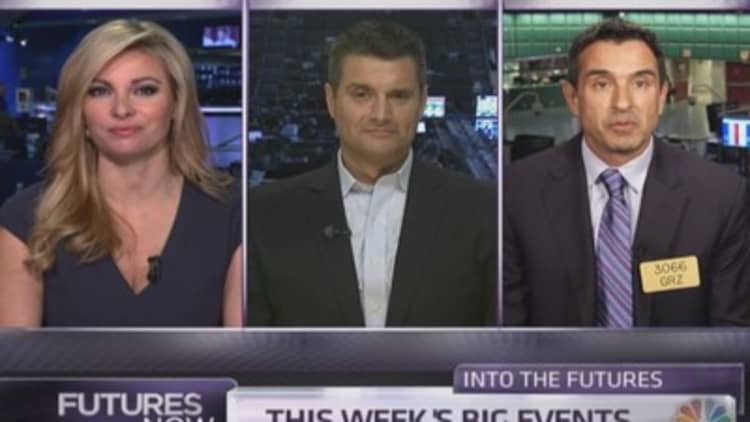
The bulls are looking for the market's mild 2014 rally to resume in the week ahead, as investors digest data that suggest the economy is growing but not quickly enough to turn the Fed more hawkish.
On Thursday, the suffered the worst session since mid-April, and followed up those losses with further declines on Friday. But Friday also brought the employment report, which many saw as a near-perfect number for the market.
According to the Bureau of Labor Services, 209,000 jobs were added in July, which was below economist expectations of about 230,000, but still marked the sixth straight month of plus-200,000 job growth. Meanwhile, the unemployment rate ticked up to 6.2 percent as more people entered the labor force, and average hourly earnings were almost perfectly flat.
The instant takeaway? That the economy is growing fast enough to power corporate results, but not so quickly as to spur the Federal Reserve to raise the key federal funds rate earlier than anticipated (widely regarded as the market's key concern right now).
'Goldilocks' jobs report fuels Fed interest rate debate
This is "not what the bears wanted to see," Mizuho Securities chief U.S. economist Steven Ricchiouto wrote in a Friday note. "The net is that the economy is growing at or slightly below trend on average. There is no reason for the market to move out of its trend."
While S&P futures gained a bit of ground immediately after the report, the market did trade lower on Friday. But Michael Block, chief strategist at Rhino Trading Partners, was sanguine.
"We're going to be fine here," Block said. "I think it creates buying opportunities."
Read More Why Democrats should not celebrate this jobs report
He points out that the lack of wage growth means that there is still "slack" in the economy, meaning that the risks of inflation are not growing particularly quickly. In its Wednesday statement, the Federal Open Market Committee wrote that "growth in economic activity rebounded in the second quarter," but "a range of labor market indicators suggests that there remains significant underutilization of labor resources." For Block, the July jobs report corroborates that precisely.
As Societe Generale chief U.S. economist Aneta Markowska put it on Friday, "The upside of today's figures is that they buy the Fed more time…. Any concerns about an earlier liftoff should fade away on the back of today's data."
Fed policy 'inappropriate' with prices rising, jobless falling: Plosser
Even well-known Fed critic Peter Boockvar of the Lindsey Group admitted that the Fed "got a temporary respite from the 'behind the curve' crowd, which I'm firmly part of."
Needless to say, some traders believe that the selling isn't over.
"Over the last two days, we've experienced market weakness based somewhat on the notion that rates are going up quicker than originally anticipated," Jim Iuorio of TJM Institutional Services wrote to CNBC.com. But just because that speculation has been halted, "that doesn't mean that the wounds in the stock market will automatically disappear. I believe we have entered a period of risk assessment that could lead to weakness for the next several weeks."
Looking to the charts, Iuorio says that "rallies should be sold in the S&P with an initial downside target of around 1892."
If the S&P actually reaches that level in the next week, that would make for a 5 percent decline from the high made on July 24th.
—By CNBC's Alex Rosenberg.
Watch "Futures Now" Tuesdays & Thursdays 1 p.m. ET exclusively on FuturesNow.CNBC.com!



